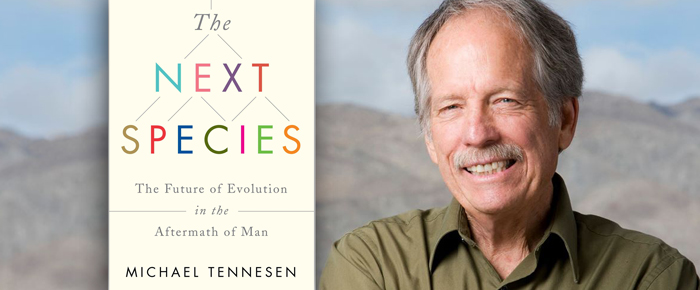
By Heidi Simmons
—–
The Next Species
By Michael Tennesen
Non-Fiction
—–
The Earth is a wonderful home. It’s beautiful and filled with amazing creatures. As if perfectly designed for human beings, everything we need for life is here. However, in The Next Species: The Future of Evolution in the Aftermath of Man (Simon & Schuster, 336 pages), author Michael Tennesen shows how the planet’s history may reveal our extinction.
If you treasure the air you breathe and the ground you walk on, this book is an important read. It is also entertaining, fascinating and terrifying. But hope is also present as human nature seems to seek a permanent place in the universe.
Tennesen gives a clear and cohesive overview of how the human race began and where it is today. He starts with past extinctions which affected the planet and ultimately brought about human beings. He traveled all over the world visiting scientists, talking to experts and examining evidence.
There were five extinctions prior to our age: The Ordovician, Devonian, Permian, Triassic and Cretaceous. Tennesen shows how these extinctions made way for new and different life forms.
The Permian event destroyed 96 percent of all species with a supervolcano 251 million years ago. It laid down the elements for dinosaurs. The Cretaceous wiped out 76 percent of species 65 million years ago after an asteroid struck the planet making way for mammals and humans.
Quickly connecting the ancient dots, Tennesen delivers an easy to follow scientific look at our changing planet and the chemical compounds that came to fruition to enhance life or destroy it. With an understanding of what shaped life on Earth, he moves to the lineage of humans.
Writing that modern man is the planet’s most successful creature, Tennesen reports that the population growth of Homo sapiens has reached its zenith. The population in A.D. 1 was about 200 million. In 2011, it was seven billion and by 2024 it is predicted to reach eight billion. If the growth rate continues, the population could reach 27 billion by 2100. And that is more inhabitants than the Earth can sustain.
Looking at social trends, wild life, agriculture and the oceans, Tennesen points to dangerously growing and irreversible damage caused by human beings that, if not stopped or reversed, will lead to the sixth extinction.
Tennesen also considers the possibilities of what could happen to humans after extinction or just before. There is a chapter on the colonization of Mars. This isn’t speculation on his part, but actual plans that are in place. Turns out, Mars is a one-way ticket! He also discusses altering our genetic code and Artificial Intelligence as ways humans might live on in other forms or dimensions.
In conclusion, Tennesen says that humans are capable of modifying their behavior and that, if the whole planet would cooperate, it is still possible to push back population models, protect natural resources and rebuild ecosystems. Tennesen believes no single cause will eliminate humans.
However, even if man can get his shit together, there is still the looming possibility of extinction from multiple causes that include climate change, disease, lack of resources and Earth being hit by a meteor. Anyway you look at it, humans have between 100 to 10,000 years before they change or become extinct. Ultimately, the planet will live on — with or without us.
The Next Species is not doom and gloom or alarmist. In fact, I found it enlightening and positive. Author Tennesen is a science writer. He asks good questions and gives solid, well-explained and researched answers. He reports with wit and optimism and draws thoughtful conclusions.
My favorite idea Tennesen reports on is the “rewilding” of Earth. Reintroducing animals – or their close cousins – back into nature can rebuild ecosystems. This plan includes freeing lions, cheetahs, camels and elephants in Texas.
For the most part, Tennesen doesn’t have an agenda – other than he clearly loves all living things and wants to see humans survive. He vividly paints a vibrant picture of our planet’s past and it’s future. For me, this is the best synopsis of our planet’s biological history and the best big picture view of the threat to human existence.
The Next Species is a significant book for our time. If you are a Creationist, don’t believe in global warming or evolution, please don’t dismiss this book; rather, embrace it. God has not only given you a mind, he has given you Earth. Didn’t he put man in charge of its care? Well, it’s time we step up. At the very least, even if we can’t save ourselves, we could be kind to one another for the time we have left.
Tennesen lives in the Coachella Valley and will be signing The Next Species at Barnes and Noble this Sunday, April 11. Call B&N for more information.









































